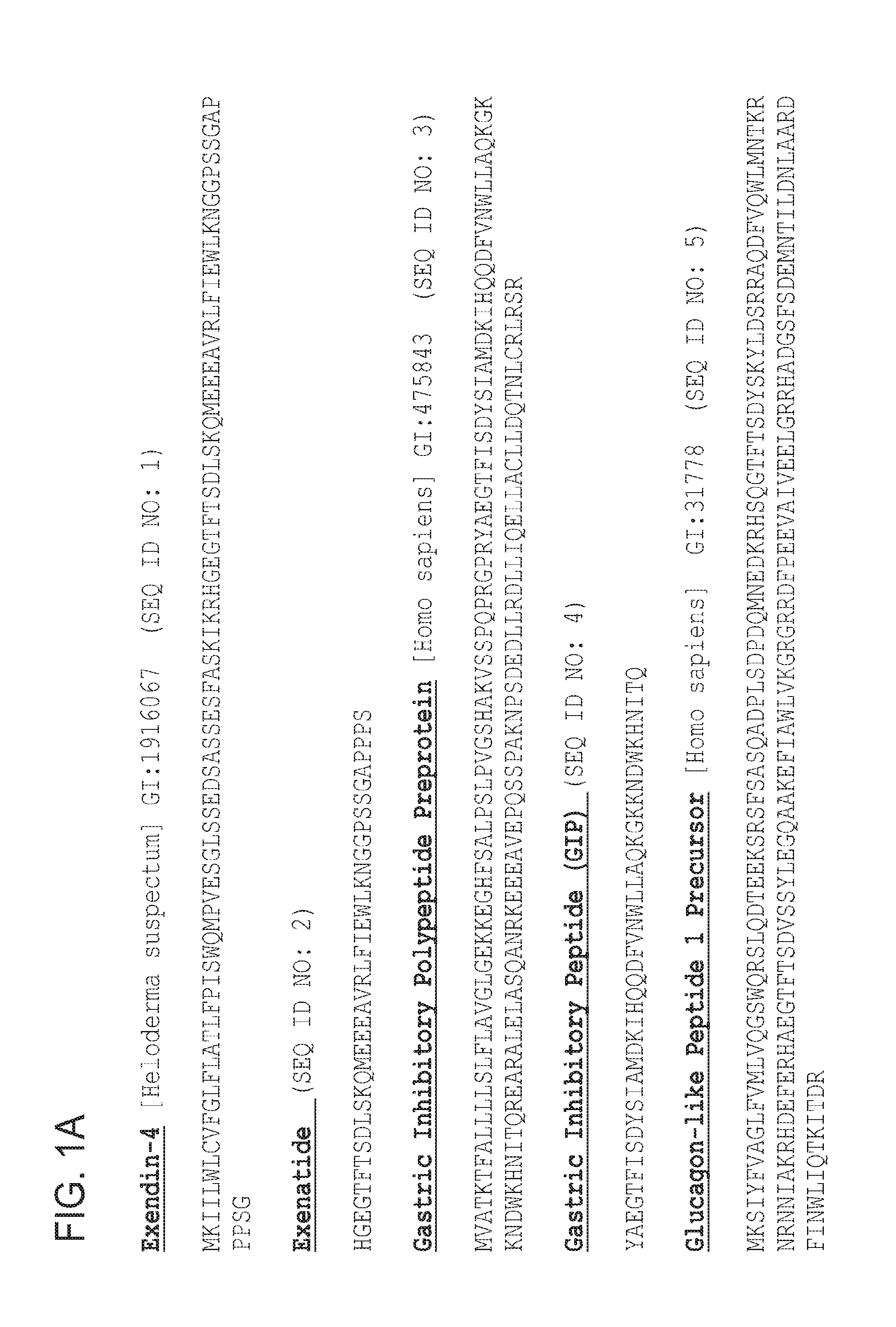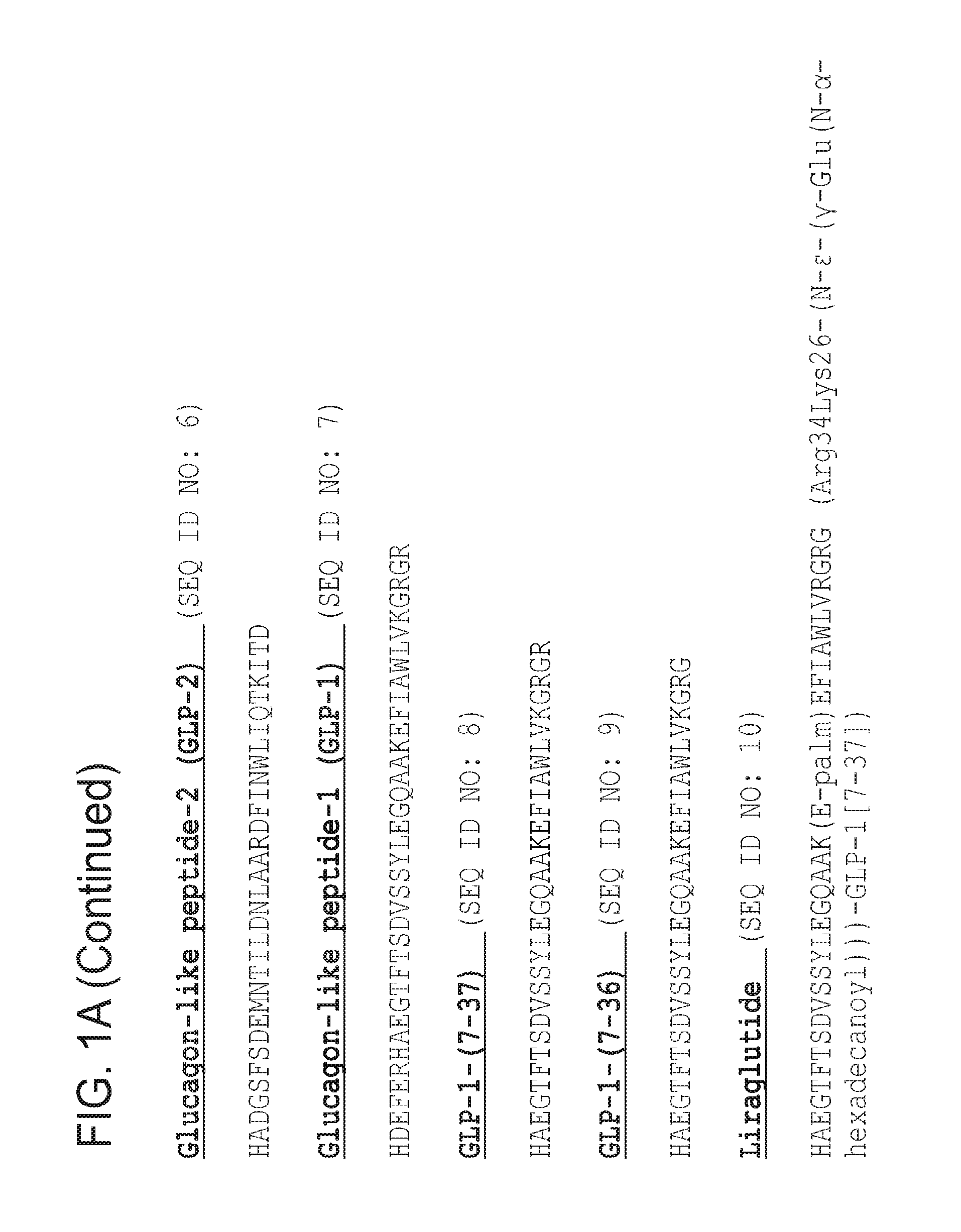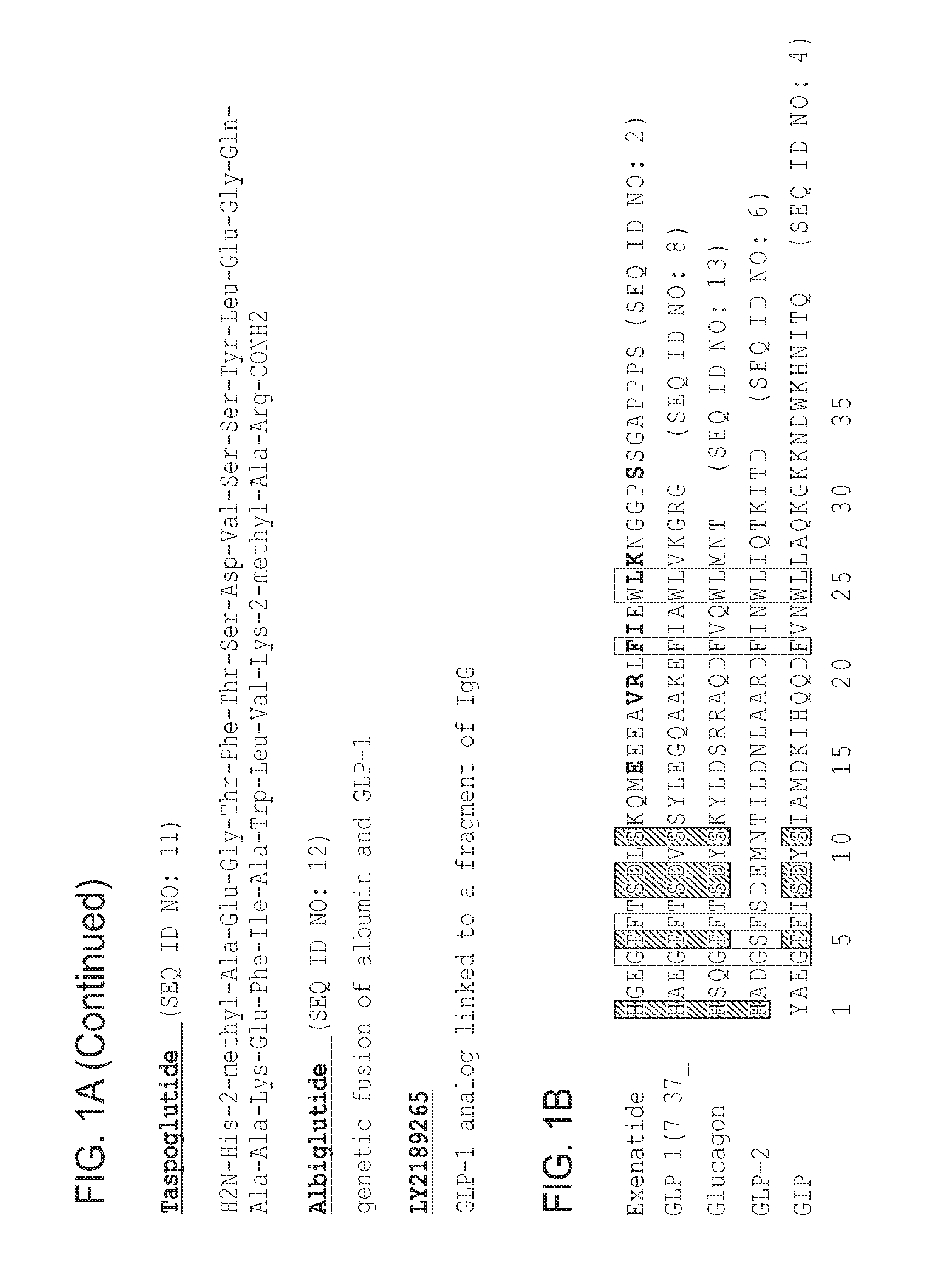Stabilized insulinotropic peptides and methods of use
a technology of insulinotropic peptides and peptides, which is applied in the direction of peptide/protein ingredients, extracellular fluid disorders, metabolic disorders, etc., can solve the problems of increased and premature morbidity and mortality, increased risk of macrovascular and microvascular complications in patients with type 2 diabetes mellitus, and increased plasma insulin levels. achieve the effects of enhancing alpha-helicity, improving thermal stability and protease resistance, and superior and unexpected benefits
- Summary
- Abstract
- Description
- Claims
- Application Information
AI Technical Summary
Benefits of technology
Problems solved by technology
Method used
Image
Examples
example 1
Materials and Methods
Synthesis of Hydrocarbon Stapled Alpha Helical Polypeptides.
[0238]A combined strategy of structural analysis and chemical synthesis was applied to construct the modified, structurally constrained peptides. Asymmetric syntheses of of (R)-Fmoc-(2′-pentenyl)alanine (“R5”), (S)-Fmoc-(2′-pentenyl)alanine (“S5”), (R)-Fmoc-(2′-octenyl)alanine (“R8”), (S)-Fmoc-(2′-octenyl)alanine (“R8”) α,α-disubstituted amino acids were performed as previously reported (Schafmeister, C. E., J. Po, and G. L. Verdine, Journal of the American Chemical Society, 2000. 122(24): p. 5891-5892; Walensky, L. D., et al., Science, 2004. 305(5689): p. 1466-1470). Synthesis of (R) or (S) Fmoc-(2′-propenyl)alanine analogs were prepared using a new method as schematized in FIG. 6 and described below.
[0239]A solution of (R)-proline and KOH in isopropanol was prepared to which benzyl chloride was added and stirred at room temperature for 3 hr. An acidic workup allowed for isolation of a precipitate in 8...
example 2
Singly and Doubly Stapled Exenatide Peptides Demonstrate Enhanced α-Helicity Compared to the Unmodified Template Peptide (FIG. 8)
[0255]To measure the effect of hydrocarbon stapling on the α-helical structure of exenatide peptides, we analyzed exenatide (Met14NorLeu), SAH-Ex(A), SAH-Ex (B), and SAH-Ex(A, B) by circular dichroism. The unmodified exenatide template peptide was predominantly unstructured in pH 7 aqueous solution at 21° C., exhibiting less than 25% α-helicity. All stapled derivatives displayed comparatively increased α-helical content. The insertion of either one or two hydrocarbon staples consistently transformed the circular dichroism spectra from a random coil pattern with a predominant single minimum at 204 nm to an α-helical contour with double minima at 208 and 222 nm
example 3
Singly and Doubly Stapled Exenatide Peptides Demonstrate Enhanced Thermal Stability Compared to the Unmodified Template Peptide (FIG. 8)
[0256]To assess the resistance of SAH-Ex peptides to thermal unfolding, we performed circular dichroism studies across a 5-83° C. temperature range for all constructs. None of the peptides demonstrated classical cooperative unfolding with increasing temperature, but instead showed incremental melting as a function of temperature. All SAH-Ex peptides retained a greater degree of α-helicity across the entire temperature range. Whereas the slopes of exenatide (Met14NorLeu), SAH-Ex(A), and SAH-Ex(B) were similar, SAH-Ex(A, B) had a flatter sloped line, indicating that the α-helicity of the doubly stapled peptide helicity was least effected by increasing temperature and reflecting a robust thermal stability.
PUM
 Login to View More
Login to View More Abstract
Description
Claims
Application Information
 Login to View More
Login to View More - R&D
- Intellectual Property
- Life Sciences
- Materials
- Tech Scout
- Unparalleled Data Quality
- Higher Quality Content
- 60% Fewer Hallucinations
Browse by: Latest US Patents, China's latest patents, Technical Efficacy Thesaurus, Application Domain, Technology Topic, Popular Technical Reports.
© 2025 PatSnap. All rights reserved.Legal|Privacy policy|Modern Slavery Act Transparency Statement|Sitemap|About US| Contact US: help@patsnap.com



